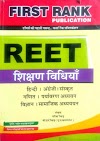Important Tips to ace Data Interpretation for CAT
The data interpretation for CAT is probably the most scoring section of the CAT exam as most of the candidates get accurate answers to the respective questions. The DI section requires the candidates to analyze a given set of data and come to a conclusion. The given set of data is represented in various graphical and tabular form and tests the critical thinking capabilities of the candidates.

The data interpretation for CAT is probably the most scoring section of the CAT exam as most of the candidates get accurate answers to the respective questions. The DI section requires the candidates to analyze a given set of data and come to a conclusion. The given set of data is represented in various graphical and tabular form and tests the critical thinking capabilities of the candidates.

It is important to note that the DI questions are less time-taking and easily solvable. As this section holds good weight-age in the CAT, the candidates are required to get well prepared for the DI section and increase their overall CAT scores. Here are some of the important tips that might help the CAT aspirants ace the section with ease.
● Strengthen the Basics
As the data interpretation section involves graphs and tables, the candidates are required to be thorough with the related concepts to be able to comprehend the questions. The questions also require the concepts of percentages, ratio, averages, etc. to answer them.
So, it is very important for the candidates to know the basic formulae of the mentioned topics and get comfortable while solving the related questions. It is suggested to go through proper books for CAT exam which include all the important quantitative concepts before starting with the data interpretation preparation.
● Practice
As the questions in the DI section include questions involving different concepts and formulae, the candidates need to be well prepared with the variations of questions to be able to tackle them comfortably. So, it is suggested to practice several DI questions to learn different methodologies to solve them and improve speed and accuracy while solving them.
The data interpretation questions not only require dedicated preparation but also proper exam strategies to score more. So, here are some tips to strategize the approach for CAT-DI section.
● Never Assume Data
It is always suggested to consider only the given information in the question and avoid assuming any further data. Assuming data not only leads to a completely different answer but also wastes a lot of important time. So, read the data set properly and comprehend on the basis of given information only to arrive at an accurate answer.
● Use Approximations
Some of the questions might not require the specific answer and might be solved with the relative values. By approximating, the candidates save a lot of time without compromising the accuracy. So, check for the answer options and mark the relative option (if confident enough) to be able to utilize the saved time for other questions.
● Be patient and Focused
The candidates are required to be focused while solving the DI section since the questions require thorough interpretation and comprehension of the data. If a single data is misinterpreted, the whole of the solution becomes incorrect and one might not arrive at the correct answer option.
Other than these aforementioned tips, the candidates are suggested to solve the previous year CAT papers to get acquainted with the types and difficulty of the questions from the CAT data interpretation sections.
As the CAT is one of the most competitive exams in the country, the candidates are required to be well versed with all the sections and concepts thoroughly. It is also suggested to devise a proper preparation plan and develop time management strategies to be able to ace the
CAT 2017 easily.
Related Posts:



